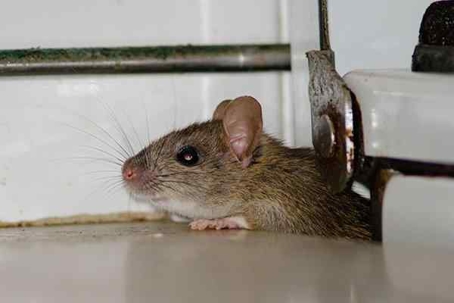Fall Rodent Prevention Tips
There are many types of rodents that can get into homes in Texas. Some present more issues than others. We're going to look at these issues and the differences between the common rodents of Texas. Doing this is helpful for understanding how to protect your property and protect your health from these invasive, destructive, and harmful pests.
Squirrels
Of all the rodents that can get into your home, squirrels are the least invasive. They prefer getting into attic spaces, and attic spaces are where they typically stay. While not as disruptive as mice and rats, that doesn't mean a squirrel infestation is no big deal. When squirrels get in, they can tear up insulation and destroy other building materials, leave urine and feces all over, make unwelcome noises, and present a serious threat to anyone who goes up into the attic. While squirrels are typically docile critters, they can become aggressive when they are cornered, or when they are protecting young.
Mice
This is a small rodent that can cause a big problem. Aptly named the common house mouse, this little critter can squeeze in through a hole the size of a nickel. It can get in through low points or high points. It is a good climber and can work its way up through a downspout to gain access to your roofline if it needs to.
Once inside, mice destroy insulation and other objects to create their nests. They're known to chew up clothing, books, wallpaper, furniture, drapes, and other objects to find nesting material. They leave their feces and urine everywhere they go, even in their nests where they sleep. They chew into food packages and taint food. They get into drawers and taint silverware. And, as they chew on wood, insulation, and other materials in your walls, they can sever a live wire and cause a house fire.
Worst of all, mice don't come in alone. They bring fleas, ticks, mites, lice, and other parasites. A single mouse can have as many as 100 seed ticks on its body.
Rats
There are two types of rats that get into Texas homes. One is a good climber and prefers to gain entrance through vulnerable points that are high. The other is a burrowing rodent that is more likely to get into your home on the bottom floor, or lower. They are the roof rat and the brown rat. Can you guess which one likes high entry points?
While roof rats can climb trees, jump onto roofs, and gnaw their way in through eaves and soffits, they can also chew their way in through a low spot of vulnerability. This makes it easy for them to get into a home. That is probably why they are often called house rats. But they aren't the most common rat in the world. Brown rats have that distinction. Brown rats, which are also referred to as Norway rats, water rats, sewer rats, and street rats, are also called common rats. That is a name that distinctly describes them.
Home Remedies & Treatments For Rodents In Houston
Rodents are one of the most difficult pests to deal with here in Houston. They get indoors by squeezing through cracks and gaps or by chewing holes through siding, lumber, and drywall. Once indoors, these pests damage property, spread disease, leave droppings and urine in hard-to-reach places, and are incredibly annoying. To deal with different types of rodents inside your home, consider bringing in a professional. At Modern Pest Control, we offer services to identify, remove, and prevent these unwanted pests. We will identify where rodents are hiding in and around your home and use advanced bait, trapping strategies, and other quality services to remove these unwanted visitors and keep them from coming back. Contact our team now to learn more about our rodent control and find a time to have your Houston home inspected for these pests.
Rodents In Houston Are Quite Common
If either of these rats gets into your home, they are going to be a serious problem. Not only are their bodies larger than mice, but their teeth are also bigger and stronger. Good luck keeping these rats out of any sensitive locations.
Being a larger animal, a roof rat and a Norway rat can carry more fleas, ticks, and other parasites than mice can. And parasites can carry human pathogens, some of which have chronic forms that can lead to lifelong illness and health complications.
If all of this isn't bad enough, rats are extraordinarily difficult to eliminate from structures without training in pest control. This is because they are neophobic. Neophobia is a fear of new objects. If you lay traps down to capture and remove rats, they're likely to avoid them. And both mice and rats are secretive, skittish creatures that could have you thinking you got rid of them only to realize weeks later that they're still there. It's important to know the signs of a rodent infestation if you attempt to control rodents yourself.
The best solution for eliminating and excluding these rodents is professional rodent control. For assistance in Katy, Houston, and the surrounding area, give us a call today!

